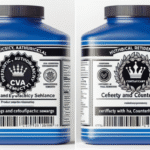Unveiling the Strategies for Crafting High-Impact SEO Product Descriptions
Excelling in Keyword Research for Maximum Relevance

The cornerstone of creating SEO-optimised product descriptions hinges on pinpointing the most impactful keywords. It is vital to identify the key terms that prospective customers utilise during their product searches, as this significantly enhances your visibility online. Conduct thorough keyword research utilizing tools such as Google Keyword Planner or SEMrush to uncover high-traffic search queries that align seamlessly with your offerings. For instance, if your emphasis is on eco-friendly kitchen utensils, focus on keywords like “sustainable kitchen tools” or “biodegradable utensils” within your content strategy. By weaving these meticulously chosen keywords into your product descriptions, you not only enhance your search engine visibility but also forge a robust link with your audience’s search intent.
Emphasising long-tail keywords also holds significant importance in this endeavour. These specific phrases often reflect a higher purchase intent among consumers. For example, targeting the phrase “best bamboo cutting board for chefs” is considerably more specific and beneficial compared to the generic term “cutting board.” By optimising your content around these long-tail variations, you can attract a more focused audience, ultimately leading to improved conversion rates.
In addition to the strategic implementation of keywords, comprehending the context surrounding these terms is equally crucial. Engaging with platforms such as Quora or Reddit can yield invaluable insights into customer queries and concerns, further refining your keyword strategy. Essentially, a robust keyword strategy serves as the backbone of your product descriptions, ensuring they resonate with your target audience and fulfil their search requirements.
Grasping Search Engine Algorithms for Superior Ranking
To thrive in developing SEO-friendly product descriptions, it is essential to understand how search engines rank content. Search algorithms are intricate and focus on numerous factors, including keyword relevance, overall content quality, user engagement metrics, and your site’s authority. For example, Google evaluates content based on its utility and relevance to search queries. High-quality content that effectively addresses users’ inquiries tends to achieve superior rankings on search results pages.
Engagement metrics such as click-through rate (CTR) and dwell time are also crucial in determining SEO success. Captivating product descriptions that retain readers' attention encourage them to remain longer on your page, signalling to search engines that your content is invaluable. This is where the art of compelling storytelling and persuasive language becomes vital, as it attracts visitors and keeps them engaged throughout their browsing experience.
Moreover, consistently updating your product descriptions to reflect trending keywords and maintain their relevance can bolster your search rankings. Search engines favour fresh content, so it is advisable to revisit and revise your descriptions regularly to align with evolving trends and keyword dynamics, ensuring ongoing visibility and engagement.
Essential On-Page SEO Components for Optimising Product Descriptions
Enhancing product descriptions with critical on-page SEO elements is vital for increasing search visibility. Start with title tags, which are fundamental for both SEO and user experience. Your title should seamlessly incorporate primary keywords while being enticing enough to encourage clicks. For instance, a title like “Eco-Friendly Bamboo Cutting Board for Sustainable Cooking” effectively merges SEO with consumer appeal, drawing in potential buyers.
Another integral aspect is the meta description. Although it does not directly influence rankings, a well-crafted meta description can significantly enhance your CTR. Ensure this summary succinctly encapsulates the essence of the product, incorporates relevant keywords, and maintains a persuasive tone to attract potential buyers, thereby increasing the likelihood of conversions.
Utilising header tags, such as H2 and H3, helps in establishing a logical structure for your content. Implementing these tags enhances readability while assisting search engines in comprehending the organisation of your page. Be strategic with keyword placement in headers, but avoid keyword stuffing, which can lead to penalties and negatively impact your rankings.
Each of these on-page elements works synergistically to amplify the SEO effectiveness of your product descriptions. When optimised correctly, they can significantly elevate your search engine rankings, driving increased traffic to your site and enhancing overall visibility.
Crafting Engaging and Persuasive Product Descriptions

Emphasising Unique Product Features
In a saturated online marketplace, articulating your product's unique features effectively can significantly differentiate you from the competition. Customers are often overwhelmed with choices, making it essential to highlight what makes your offerings stand out. Begin by identifying the key characteristics that distinguish your product. For instance, if you offer a smartwatch equipped with health monitoring capabilities, highlight its exclusive features such as heart rate tracking and sleep analysis, clearly demonstrating its benefits to potential buyers.
Utilising storytelling techniques can further amplify the appeal of your descriptions. Instead of merely listing features, narrate how these advantages translate into practical benefits for the user. For example, “Our smartwatch not only tracks your heart rate but also alerts you to unusual activities, promoting your well-being even on the busiest days.” This approach engages potential buyers on an emotional level, transforming the product from a mere tool into a trusted companion in their daily lives.
Visual aids can also effectively enhance your written content. High-quality images, videos, or infographics that highlight unique features can significantly boost engagement. Including customer testimonials or case studies can reinforce the product's advantages, establishing a narrative of trust that drives conversions and persuades potential buyers of the product's value.
Every word in your product description should serve a purpose, guiding the reader to understand why this product is the ideal choice for them amid numerous options, ultimately steering them towards making a purchase decision.
Utilising Persuasive Language Techniques
Implementing persuasive language is essential for driving conversions within your product descriptions. Use action-oriented verbs and benefit-focused phrases to ignite interest and urgency among potential buyers. Strong verbs like “discover,” “experience,” or “transform” can stimulate a sense of action and compel readers to engage with your product. Rather than stating, “This blender is powerful,” consider phrasing it as, “Transform your smoothies with our professional-grade blender that effortlessly crushes ice in seconds,” emphasising the product's capabilities.
Incorporating emotional triggers can also significantly enhance effectiveness. Understand your target audience's desires and pain points. If your product addresses a common issue, frame it as a solution. For example, “Say goodbye to clutter with our space-saving kitchen organiser,” directly addresses frustrations related to disorganised spaces and resonates deeply with consumers seeking organisation solutions.
Creating a sense of urgency can prompt immediate action as well. Phrases like “limited stock available” or “exclusive offer” can motivate customers to make swift decisions. Ultimately, your objective is to inspire readers to envision themselves utilising the product, leading them to take decisive action towards making a purchase.
Ensuring Clarity and Conciseness in Descriptions

While it’s crucial to highlight unique features and employ persuasive language, clarity and brevity should never be compromised. In today's fast-paced world, where attention spans are rapidly shrinking, efficiently conveying information is vital. Aim for descriptions that are straightforward and easily digestible, avoiding jargon that could alienate potential customers and detract from the message.
Break your text into manageable sections using bullet points or short paragraphs. This strategy not only enhances readability but also allows key information to stand out more prominently. For instance, instead of providing a lengthy paragraph detailing features, consider employing bullet points to concisely outline them, making it easier for customers to glean essential information quickly.
Using simple language promotes understanding and ensures your message resonates with a broad audience. When crafting product descriptions, always assess whether a reader unfamiliar with the product would comprehend your message. The clearer and more concise your description, the higher the likelihood of converting readers into buyers.
Customising Descriptions for Target Audience Engagement
Understanding your target audience is essential when creating effective product descriptions. Your descriptions should directly address their needs, preferences, and pain points. Start by developing buyer personas based on demographic data, purchasing behaviours, and interests. Are you appealing to young professionals, families, or environmentally-conscious consumers? Each demographic will respond differently to your messaging and tone.
Personalising your descriptions can be as straightforward as using language and tone that resonates with your audience. For example, a casual and friendly tone may appeal to a younger demographic, while a more formal approach might attract professionals seeking sophistication in their purchases.
Moreover, consider cultural differences within your global audience. What resonates in one region might not be effective in another. For instance, humour may be well-received in some cultures, while it might not resonate in others. By customizing your descriptions to reflect the values and preferences of your target market, you forge a more profound connection that encourages purchasing and brand loyalty.
Analysing competitors can also provide invaluable insights into what appeals to your audience. Evaluate the language they employ, the features they emphasise, and their pricing strategies. This competitive analysis can help you refine your approach and strategically position your offerings in the marketplace, enabling you to stand out from the crowd.
Enhancing Mobile User Experience for Product Descriptions
Key Considerations for Responsive Design
With an increasing number of consumers shopping on mobile devices, optimising your product descriptions for mobile users is of paramount importance. A responsive design adapts smoothly to various screen sizes, significantly enhancing user experience. For creating SEO-friendly product descriptions, this means ensuring your text is easily readable without requiring pinch-to-zoom actions, thereby improving accessibility for all users.
Begin by testing your website on different devices, including smartphones and tablets. Assess how your product descriptions appear and make necessary adjustments to ensure optimal readability. Larger fonts and adequate spacing can help prevent user frustration and encourage engagement, allowing users to navigate your site effortlessly.
It’s also vital to acknowledge that mobile users often exhibit distinct shopping behaviours compared to desktop users. They may seek quick answers or simplified navigation, so prioritise essential information at the forefront of your descriptions. Consider incorporating collapsible sections for detailed content, allowing users to expand and explore only if they choose, thus streamlining their experience.
Ultimately, providing a seamless mobile experience not only enhances user satisfaction but can also improve your SEO rankings, as search engines favour mobile-friendly sites in their algorithms, leading to increased visibility and higher traffic.
Improving Load Time and Performance
Website load time is a critical factor that influences user experience and SEO rankings. Pages that load slowly can deter potential customers, resulting in higher bounce rates. To optimise product descriptions for faster load times, consider compressing images without sacrificing quality. Use tools like TinyPNG or ImageOptim for effective file size reduction, ensuring a balance between quality and performance.
Additionally, minimise heavy scripts and external resources that can hinder page loading. Streamlining your HTML and CSS can also enhance site performance. Tools like Google PageSpeed Insights can offer actionable recommendations to optimise your site speed, helping you achieve the best possible performance for your users.
A well-optimised product description page should load quickly, especially on mobile devices where users anticipate prompt access. Aim for a loading time of under two seconds to keep users engaged and satisfied, thereby increasing the likelihood of conversions.
Creating Touch-Friendly Navigation
Mobile users interact with screens differently than desktop users, making touch-friendly navigation essential for effective product descriptions. Design elements should be large enough for easy tapping, preventing frustration for users with smaller screens and enhancing their overall experience.
Incorporate clear calls to action that are easily accessible. For example, buttons with phrases like “Buy Now” or “Add to Cart” should be prominent and adequately spaced to avoid misclicks. Consider implementing sticky headers that allow users to navigate effortlessly without needing to scroll back to the top, streamlining their journey through your site.
Furthermore, ensure that every aspect of your product description is designed for touch interaction. For instance, images should be tappable, leading to larger views or additional product details. By making navigation intuitive and user-friendly, you create a positive shopping experience that encourages purchases and fosters customer loyalty.
Utilising Customer Reviews to Enhance Credibility
Incorporating Reviews into Product Descriptions
Integrating customer reviews into your product descriptions can significantly enhance trust and credibility. Positive feedback serves as social proof, reassuring potential buyers about the quality and reliability of your offerings. Strategically placing a review within the description can pique interest and encourage purchases, making them an essential element of your marketing strategy.
Consider embedding snippets of customer testimonials directly into your product descriptions. For instance, “Trusted by over 500 customers, our eco-friendly water bottle maintains drinks at a cold temperature for 12 hours,” highlights both popularity and functionality, enhancing the product's appeal.
To maximise the impact of reviews, ensure they are prominently displayed on the product page. Creating a dedicated section for customer feedback can attract attention, as shoppers often seek reassurance from their peers before making a purchase decision, thus increasing the likelihood of conversion.
Remember to regularly update the reviews featured in your descriptions. Fresh and relevant feedback keeps your content dynamic and reflects ongoing customer satisfaction, thereby enhancing credibility and fostering trust among potential buyers.
Actively Engaging with Customer Feedback
Engaging with customer feedback is vital for nurturing a loyal customer base. When customers leave reviews—whether positive or negative—make it a priority to respond publicly. This demonstrates your commitment to customer satisfaction and shows potential buyers that you value their input and are actively listening to their concerns.
Addressing negative feedback swiftly and professionally can mitigate potential harm to your brand image. Acknowledging customer concerns and providing solutions can convert a dissatisfied customer into a loyal advocate. For instance, if a customer raises an issue regarding a product defect, responding with a solution, such as a replacement or refund, can greatly enhance their perception of your brand and foster loyalty.
Encouraging customers to leave feedback is equally important. Consider following up with customers post-purchase through email, inviting them to share their experiences. Offering incentives, such as discounts on future purchases for leaving a review, can also motivate customers to engage and provide valuable insights into your products.
Ultimately, consistent interaction with customer feedback fosters a transparent relationship, enhancing brand loyalty and potentially increasing sales over time as satisfied customers advocate for your products.
Strategies for Increasing Customer Reviews
Boosting the volume of customer reviews is a critical strategy for enhancing credibility and improving SEO. The more reviews a product garners, the more authoritative it appears to both consumers and search engines. Encourage satisfied customers to share their experiences by implementing a streamlined review request process that is easy and accessible.
Consider sending personalised follow-up emails post-purchase, expressing gratitude for their business and inviting them to leave a review. Simplify the process by providing direct links to the review page. You can also craft an engaging call-to-action that underscores the value of their feedback, such as “Your opinion helps us serve you better!” to encourage participation.
Sharing reviews in your marketing materials or on social media can also draw attention to your offerings. Highlighting positive testimonials on platforms like Instagram or Facebook not only showcases your products but also encourages others to leave feedback, creating a community of satisfied customers.
By actively promoting customer reviews, you create a continuous feedback loop that enhances your product descriptions and bolsters your SEO efforts, ultimately leading to increased visibility and sales.
Analysing Insights from Customer Reviews
Monitoring and analysing trends in customer reviews can provide valuable insights into your products and marketing strategies. Identify common themes in feedback to pinpoint areas for improvement. If multiple customers mention a specific feature, consider enhancing it or promoting it more prominently in your product descriptions to align with customer expectations.
Utilise analytics tools to aggregate review data and discern trends over time. This analysis can help you understand shifts in customer perceptions or preferences, enabling you to adapt your product offerings accordingly. For instance, if reviews indicate that a product’s size is a recurring concern, consider adjusting the sizing options or updating the description to provide clearer sizing information for potential buyers.
Tracking sentiment analysis of reviews can also reveal overall customer satisfaction. Are customers consistently pleased with your products, or is there a trend of disappointment? Proactively addressing these sentiments can lead to improved products and enhanced customer experiences, fostering loyalty and repeat purchases.
Ultimately, leveraging insights from review trends not only enhances product descriptions but also informs critical business decisions, driving growth and customer satisfaction over time as you continuously adapt to market needs.
Showcasing Top Reviews for Greater Influence
Highlighting standout reviews can significantly impact potential buyers, serving as powerful endorsements for your products. Make it a priority to feature exceptional testimonials prominently on product pages. This can be achieved through a dedicated section or integrated into the product description itself, ensuring visibility and accessibility.
When showcasing reviews, focus on those that highlight specific benefits or features. For instance, a review stating, “This blender has revolutionised my morning routine—smoothies in seconds!” effectively communicates value to prospective customers, enhancing their perception of the product's utility.
Consider enhancing the presentation of these top reviews with visual elements. Incorporating star ratings, customer images, or even video testimonials can create a more engaging experience for potential buyers, making the reviews more relatable and impactful.
Additionally, regularly rotating featured reviews can keep your content fresh and encourage repeat visits from returning customers. By showcasing the voices of satisfied customers, you enhance the credibility of your product descriptions, ultimately encouraging conversions and fostering trust.
Utilising Rich Snippets to Increase Visibility
Implementing Effective Schema Markup
Integrating schema markup is a powerful technique for enhancing how your product descriptions appear in search results. Schema is a structured data vocabulary that assists search engines in understanding your content more effectively. By incorporating schema markup into your product descriptions, you enhance their visibility and can achieve rich snippets—those visually captivating search results that stand out from the rest and attract user attention.
For instance, adding schema markup can display product ratings, prices, and availability directly in search results, providing potential customers with immediate information and increasing click-through rates significantly. There are various schema types specifically designed for product optimisation, such as Product Schema, Review Schema, and Aggregate Ratings, each serving to enhance the visibility of your product listings.
Utilising tools like Google’s Structured Data Markup Helper can assist you in implementing schema correctly. Once added, test your markup with Google’s Structured Data Testing Tool to ensure it functions as intended, confirming that your efforts will yield the desired enhancements in search visibility.
The efforts invested in schema markup can yield substantial returns, as search engines generally reward well-structured content with higher rankings in search results, thereby increasing traffic and potential sales.
Improving Click-Through Rates with Rich Snippets
Rich snippets can dramatically improve click-through rates from search results, providing a significant boost to your SEO initiatives. By making your listings more visually appealing, you can capture the attention of users scanning through search results, increasing the likelihood of clicks.
Highlighting key information—such as star ratings, pricing, and product availability—directly in search results can compel users to click. For example, seeing a product with a high rating and competitive pricing in rich snippets can greatly influence the decision-making process of potential buyers, encouraging them to learn more about your offerings.
In addition to structured data, consider optimising the phrasing of your meta descriptions. An engaging meta description paired with rich snippets can create a compelling combination that draws users in. Experiment with different approaches to determine what resonates most with your audience, continually refining your strategy for optimal results and enhancing visibility.
Monitoring the impact of rich snippets on your click-through rates can provide valuable insights into user behaviour and preferences, allowing you to adjust your marketing strategy as necessary, ensuring ongoing effectiveness and relevance.
Evaluating the Performance of Rich Snippets
Monitoring how rich snippets affect your SEO performance is essential for ongoing enhancement. Utilise tools like Google Search Console to track impressions, clicks, and CTR for your product pages. This data will help you understand user interactions with your rich snippets and identify areas for optimisation that can lead to improved performance.
Analyse which products generate the most engagement and which rich snippets perform best. It may be that specific keywords or product categories yield superior results. Use this information to refine your schema implementation and enhance visibility for your top-performing products, ensuring that you capitalise on successful strategies.
Regularly reviewing performance metrics will also enable you to adjust your overall SEO strategy. By staying informed about how rich snippets impact your results, you can make data-driven decisions that enhance your marketing efforts and drive more traffic to your site, ultimately leading to increased sales.
Commitment to Continuous Improvement and Analysis
Regular Updates to Sustain Fresh Content
Keeping product descriptions fresh and relevant through regular updates is crucial for sustaining SEO performance. The online marketplace is continuously evolving, with trends, customer preferences, and search algorithms changing frequently. Regularly revisiting your content based on market trends and customer feedback ensures that your descriptions remain current and effective in driving engagement and conversions.
Establish a schedule for reviewing and updating product descriptions. This could be quarterly, semi-annually, or whenever necessary based on customer feedback and sales performance. When updating, consider incorporating new keywords that have gained traction or adjusting the focus of the description to better align with current market demands and consumer interests.
Additionally, consider seasonal trends that may influence your product’s relevance. For instance, refreshing descriptions for holiday sales or back-to-school promotions can capture timely interest from shoppers, ensuring that your offerings resonate with current consumer needs.
By consistently updating your product descriptions, you signal to search engines that your content is active and relevant, which can help improve your rankings over time, ultimately enhancing visibility and driving sales.
Key SEO Performance Metrics to Monitor
Monitoring essential performance metrics is crucial for assessing the effectiveness of your SEO efforts. Focus on metrics such as organic traffic, click-through rates, and conversion rates to measure how well your product descriptions perform and their impact on overall sales.
Utilise analytical tools like Google Analytics to monitor these metrics over time. By analysing trends and fluctuations in traffic, you can identify which product descriptions resonate most with users and which may need optimisation to improve performance and engagement.
Furthermore, keeping an eye on bounce rates can provide insights regarding whether your descriptions successfully capture and retain user interest. A high bounce rate may indicate that your descriptions are not meeting user expectations, prompting a review and potential revision to enhance their effectiveness.
Regularly assessing your SEO performance metrics aids in refining your strategy, ensuring that your product descriptions not only attract traffic but also convert visitors into sales effectively, driving business growth.
Implementing A/B Testing for Enhanced Optimisation
A/B testing is a powerful strategy for discovering the most effective approaches for your audience concerning product descriptions. By comparing different formats, wording, and calls to action, you can gain insights into what resonates best with potential customers and drives conversions.
Consider testing various elements of your product descriptions, such as the use of bullet points versus paragraphs, varying lengths of descriptions, or different headline formats. For instance, analyse whether a shorter, punchy description performs better than a more detailed one in terms of user engagement and conversions.
Evaluating results from A/B tests will provide valuable data to guide your future content creation efforts. Over time, these incremental optimisations can lead to significant improvements in conversion rates and overall performance, ensuring that your product descriptions are continually refined for maximum effectiveness.
By adopting an iterative approach to your product descriptions through A/B testing, you can create content that not only attracts traffic but also effectively converts visitors into loyal buyers, thereby enhancing your overall business success.
Frequently Asked Questions About SEO-Friendly Product Descriptions
What defines SEO-friendly product descriptions?
SEO-friendly product descriptions are specifically optimised to rank higher in search engine results. They incorporate relevant keywords, provide clear and engaging content, and adhere to best practices for readability and user engagement, ultimately enhancing visibility and driving conversions.
Why are keywords crucial in product descriptions?
Keywords are vital because they align your product descriptions with the search terms potential customers utilise. Adequate keyword integration increases visibility in search results, driving more organic traffic to your pages and enhancing the likelihood of conversions.
How can I enhance the engagement level of my product descriptions?
To create engaging product descriptions, focus on storytelling, utilise persuasive language, highlight unique features, and tailor content to the specific needs and preferences of your target audience, ensuring that your descriptions resonate with potential buyers.
What significance do customer reviews hold in product descriptions?
Customer reviews enhance trust and credibility by serving as social proof. Integrating positive feedback into product descriptions can significantly influence buying decisions and improve SEO, as reviews contribute to the overall quality and relevance of your content.
What strategies can I employ to optimise product descriptions for mobile users?
To optimise for mobile, ensure responsive design, minimise load times, and create touch-friendly navigation. Use concise language and clear formatting to enhance readability on smaller screens, ensuring a seamless experience for mobile users.
What are rich snippets, and why are they important for SEO?
Rich snippets are enhanced search results that display additional information, such as ratings and prices. They improve visibility and click-through rates, making them a valuable asset for increasing traffic to your site and enhancing overall SEO performance.
How often should I refresh my product descriptions?
Regular updates are recommended, typically every few months or as market trends evolve. Keeping descriptions fresh ensures they remain relevant and optimised for search engines, contributing to ongoing visibility and engagement.
Which metrics should I monitor to evaluate my SEO performance?
Key metrics include organic traffic, click-through rates, conversion rates, and bounce rates. Monitoring these helps gauge the effectiveness of your product descriptions and overall SEO strategy, guiding future optimisations.
What are effective A/B testing strategies?
A/B testing involves comparing two versions of content to determine which performs better. For product descriptions, you might test different headlines or formats to identify what resonates with your audience, optimising for engagement and conversions.
How can I encourage more customer reviews for my products?
Encouraging reviews can be achieved through follow-up emails post-purchase, offering incentives like discounts, and simplifying the review process. Engaging with customers can help increase review frequency, enhancing your credibility and SEO efforts.
Discover our journey on X!
The Article How to Create SEO-Friendly Product Descriptions was first published on https://marketing-tutor.com
The Article SEO-Friendly Product Descriptions: A Quick Guide Was Found On https://limitsofstrategy.com

